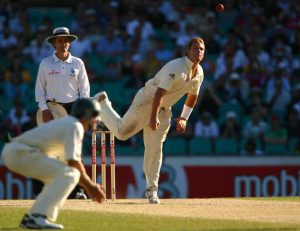Flight Loop Turn and Bounce - Spin bowling and its variations
4 Min Read


Flight Loop Turn and Bounce – Spin bowling and its variations: When the game of cricket was born there were only two breed of bowlers – those who bowled quick and those who did not. But it did not take time for the players to realize that a third form of bowling, perhaps the most intriguing one, was worth trying. And that is how the world got enlightened to spin.
Spin bowling is more an art than science and has come a long way from its early form and types. Slow and flighted deliveries to the quicker ones, spin has every dimension to it. Toss it up, flight the ball, give it some air, and get it above the batsman’s eye line, every spin bowler has heard these common advises in his career. The art of spin bowling is that of deceiving the batsman as to what the ball will do. A typical spin delivery has a speed in the range 70–90 kph. Spin bowling is divided into four different categories, depending on the particular physical technique used:
Take a look at Flight Loop Turn and Bounce – The spin bowling and variations:
1. Off break: Right-handed with finger spin technique. Example – R Ashwin
2. Left arm Orthodox spin: Left-handed with finger spin technique. Example – Daniel Vettori
3. Leg Break: Right-handed with wrist spin technique. Example – Shane Warne
4. Left arm unorthodox spin (Chinaman) – Left-handed with wrist spin technique. Example – Brad Hogg
Spin bowlers are more effective later in a game, as the pitch dries up and begins to crack and crumble. This provides more purchase for the spinning ball and produces greater deviation. When classified in more simpler terms spin bowling bifurcates into 2 classes – Leg Spin Bowling and Off spin bowling.
It is customary among cricket commentators to describe and judge the quality of spin bowling in terms of the characteristics flight, turn, bounce, drift, and dip. All these are arts to deceive the batsman and require a lot of practice.
Turn: How much the ball turns after pitching (e.g. 5 degree deviation after meeting the ground). It depends on the number and direction of revolutions of the ball and the assistance off the pitch. The movement and rotation of the ball varies, depending on the position of the wrist and the finger.
Drift: Getting the ball to move sideways while in air. Late drift causes the batsman to cover the wrong line and the ball may catch the edge of the bat.
Dip: Getting the ball to pitch (meet the ground) at a shorter distance than normal. Late dip causes the batsman to misjudge the length of the ball.
Bounce: Getting the ball to bounce more than normal, so that the ball meets the bat at a greater height than expected.
Leg Spin Variations:
1. Stock Ball: This is not actually a leg break, although in most cases this is indeed the case. A stock ball simply refers to the main delivery used by a bowler. So, for example, Anil Kumble’s stock ball was in fact the top spinner.
2. Leg Break: Breaks from leg to the offside, after drifting from off to the leg side. Seam is angled towards leg slip.
3. Top Spinner: Continues straight on, with a lot of dip (due to The Magnus Effect). Seam is angled towards the batsman.
4. Googly (wrong ‘un or bosey): A delivery in which the ball spins in the opposite direction to the stock delivery.
5. Slider or Zooter: A delivery in which the ball spins away from the batsman, it is bowled with a scrambled seam.
6. Chinaman: This is simply a leg break bowled by a left hander. The ball breaks from off to the leg side.
7. Flipper: There are a variety of ways to bowl this delivery, but the main idea of a flipper is a delivery that skids through quick and low after bouncing.
8. Quicker ball: Simply pushed through quicker than the stock delivery. No better example than the ones delivered by Shahid Afridi, which has brought him tons of wickets.
Off Spin variations:
1. Off Break: Breaks from off to the leg side, after drifting from leg to the off side. Seam is angled towards leg slip.
2. Doosra: Breaks from leg to the off side but with an action that appears to the batsman as an off-break. Seam is angled towards first slip. Alternatively it is bowled with a scrambled seam over the back of the hand.
3. Back spinner/ Teesra / Jalebi/ Slider: Opposite of the top spinner, as the ball spins backwards (away from the batsman), floats in the air (as oppose to dipping), and skids low on bouncing. The seam is angled towards the batsman.
The name Teesra was first used by Saqlain Mushtaq when he started bowling this delivery and Jalebi was used by commentators when they first saw it. But, they are nothing else but orthodox back spinners.
4. Carrom ball: The carrom ball (also known as the sodukku ball in parts of India) is a style of spin bowling where the ball is released by flicking it between the thumb and a bent middle finger in order to impart spin. Though the delivery is known to date from at least the 1940s, it was re-introduced into mainstream international cricket in 2008 by Ajantha Mendis.
5. Under cutter/Square spinner: This deliver skids on and is closely associated with the back spinner.
However, the seam here is angled horizontally (opposite of the arm ball) and the hand cuts underneath when released. The ball will skid on or turn depending on if it hits the seam or not.
6. Arm Ball: A delivery in which the ball goes on with the angle of the arm without spinning. This term is used more for Left arm spinners.
Download Our App